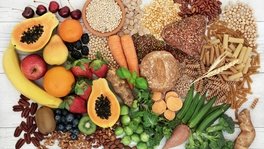For years now, fibre has been hailed as the next must-have ingredient and even "the new protein". In 2026, these predictions could be on the verge of coming good at last.
Although fibre still has some way to go before it can rival protein in sales and public awareness, momentum appears to be shifting. More than a third of Brits now try to balance both protein and fibre equally, Vypr research suggests. The 'fibremaxxing' trend on TikTok is just the latest sign that conversations about fibre are finding larger audiences, including younger consumers.
Growing use of GLP-1 weight loss drugs could accelerate this further. Those on the drugs are already told to prioritise fibre to keep their gut healthy. Those wanting to curb their appetite without pharmaceuticals could be drawn to fibre's well-established role in promoting satiety.
But any big trend comes with potential downsides. As Joe Wicks’s ‘Killer Bar’ programme about high-protein products showed, a backlash is never far away. So, what do fibre-curious food and drink brands need to be aware of?
Fibre is starting from a strong position. Unlike protein, the UK has a genuine deficiency in fibre. Just 4% of adults get the recommended 30g a day. It’s why the prospect of a fibre boom is exciting not just retailers and manufacturers, but also many nutritionists and public health experts.
Brands with products that can claim to be naturally high in fibre will be in an especially strong position, as will those that align with messages about nutrient density and diversity. The ‘30 plants a week’ push and the new campaign to get Brits to eat more beans are two key examples.
There will also be plenty of room for products with added fibre. As the protein boom has shown, many consumers appreciate the ability to boost their nutrition with targeted, fortified products.
But fortification also comes with potential challenges. In the US, where the high-fibre food and drink market is several years ahead of the UK, we’ve recently started to see more negative media coverage about products with added fibre.
Growing scrutiny of fibre claims
The biggest bone of contention is fortified products that also happen to be highly processed, such as sodas and snack bars. Some US doctors are now urging consumers to be wary of eating too many fibre-enriched foods, warning that fibre content can give junk food an undeserved “health halo”.
They are also pointing out that processed foods with added fibre tend to over-index on certain types of fibre – inulin, often derived from chicory root, is a particular favourite – which could “lead to excessive growth of the specific bacteria in the gut that feed on those fibres, throwing off the microbiome’s balance”.
In other words: far from improving gut health, excessive consumption of certain types of added-fibre products could make the gut less healthy.
Emerging research linking inulin to health problems has also set off alarm bells. The research is far from conclusive, but it’s not hard to see how it could one day lead to ‘Killer Bar’ style accusations.
Retailers and brands looking to turn fibre into “the new protein” also face other challenges.
The world in 2026 will be very different to that of 2016, when the protein boom first gathered serious steam. The ultra-processed foods debate has sensitised the public to health claims on packaged foods and created a more challenging environment for functional NPD.
Trust is key and less may be more. As tempting as it is to go all in on fibre, smaller, carefully curated ranges are likely to lead to more sustainable success. The last thing we want is for fibre to look like a ‘trend’ – everywhere one year, forgotten the next.
The potential to close the UK’s fibre gap is genuinely exciting, but it will take more than simply trying to emulate protein’s success. Retailers and brands need to study the protein boom carefully, draw the right lessons from its successes as well as any ‘Killer Bar’ pushback – and decide when and where fibre should pursue a deliberately different path.
Spotting interesting trends and finding noteworthy food facts and figures is a big part of what we do at Ceres. Check out our recent Food For Thought, which explores 10 recent articles, reports and long reads that made us stop and think.






